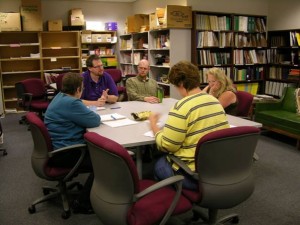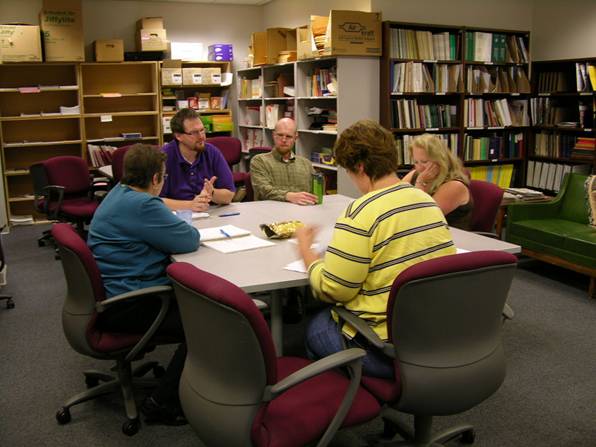The National Historic Preservation Act (NHPA) of 1966 recognizes that historic preservation is a public interest. Under Section 106 of the NHPA, Federal agencies are required to consider the effects of their projects on historic properties in consultation with historic preservation stakeholders. There is a general lack of understanding related to the consultation process, and how it is carried out varies widely by Federal agency and by project. This blog hopes to provide answers to more common questions about consultation and references for additional information.
1) What is consultation and what does it mean in the context of Section 106?
The implementing regulations for Section 106 define consultation as the process of “seeking, discussing and considering the views of other participants, and where feasible, seeking agreement with them regarding matters arising in the Section 106 process” (36 CFR 800.16(f). Consultation is a two-way communication that involves the exchange of ideas between the federal agencies and preservation stakeholders. It requires willingness on behalf of the federal agencies as well as the preservation stakeholders to explore a variety of possibilities for agreement on issues that arise in the 106 process.
Consultation occurs during the planning phase of a project, months or years before any construction activity gets started, so it is important to pay attention to meetings and news stories about plans being developed that could affect historic properties. Once the construction equipment arrives, it is often too late to have a meaningful impact on how a project is designed or implemented.
2) What is the role of the federal agency in the consultation process?
It is the role of the federal agency to identify as well as seek comments from those organizations or individuals that have an interest in historic properties that may be affected by their project, also known as consulting parties. The agency is required to conduct consultation in a manner that reflects the nature and complexity of the project and its effects on historic properties. While the consultation process is the responsibility of the federal agency, it is often carried out by an authorized representative, which could be a municipality, nonprofit organization, applicant for funds or permits, engineering firm or hired project consultant. This sharing or delegation of federal responsibilities can lead to misunderstandings about who is managing the necessary steps of the process or what level of effort is required.
3) Who are typical consulting parties?
Our office, the Bureau for Historic Preservation (BHP) (as the State Historic Preservation Office), Native American tribes, local governments, and project applicants are considered “by right” participants in the process. These are parties that the Federal agency must always include in the consultation process.
Other individuals and organizations must show they have a demonstrated legal, economic, or historic preservation interest in the project in order to participate in Section 106 consultation. This usually includes but is not limited to statewide, local, and sometimes national preservation advocacy groups. Municipal governments, environmental organizations, community development organizations, and nearby property owners are frequent participants in discussions about these projects. The participation of organizations or individuals in the consultation process is subject to approval by the responsible federal agency.
4) What is the role of the BHP in the consultation process?
 It is the job of the State Historic Preservation Office, the BHP in Pennsylvania, to advise and assist Federal agencies in carrying out the 106 process. The BHP strives to reinforce the requirement to seek out and invite consulting parties beyond our office by requesting federal agencies to identify and invite consulting parties early on in the Section 106 process. Despite these efforts, our office and the Federal agency are often the only stakeholders in the decision making process.
It is the job of the State Historic Preservation Office, the BHP in Pennsylvania, to advise and assist Federal agencies in carrying out the 106 process. The BHP strives to reinforce the requirement to seek out and invite consulting parties beyond our office by requesting federal agencies to identify and invite consulting parties early on in the Section 106 process. Despite these efforts, our office and the Federal agency are often the only stakeholders in the decision making process.
5) Why is local involvement critical to the consultation process?
While our office has access to the statewide inventory and years of staff experience that we can use to help a Federal agency identify historic properties or assess the potential for project effects to historic properties, we are not always presented with the information that may be pertinent to a project and are not always aware of the full range of local concerns. That is why the participation of local stakeholders is so valuable to the consultation process. Local involvement provides an essential on-the-ground check and balance to the process. Local consulting parties can also play an important role by monitoring the progress of project activities at the local level. It’s important to remember that Section 106 was created as part of the NHPA because the public felt local historic properties were not being given due consideration in the planning of federal programs, such as urban renewal and the interstate highway system.
6) How is consultation carried out?
Among Federal agencies there is no consistent approach to the involvement of consulting parties in the consultation process. Many send letters soliciting consulting party participation and feedback to known organizations or individuals with a preservation interest in the project area. Others hold meetings or solicit participation as part of public involvement requirements for the National Environmental Policy Act (NEPA). Still others have online systems for the dissemination of information to consulting parties, such as ProjectPATH, used by PennDOT to carry out consultation responsibilities on behalf of the Federal Highway Administration (FHWA).
7) How can I get involved in the consultation process?
Educating yourself about the role of consulting parties and how the Section 106 process works will enable you to be more confident in your rights and ability to participate in the process. Technical assistance and guidance is available on the website of the Advisory Council on Historic Preservation:. Especially useful is the publication Protecting Historic Properties: A Citizens Guide to Section 106. A future BHP blog will also provide an opportunity for interested organizations to be included in a database of potential consulting parties being developed by the BHP.
The most critical step you can take when there is a Federally-assisted project in your community is to make yourself known to the sponsors of the project during the planning phase. This includes the State and Federal agencies or their authorized representatives. Ask specifically to be included in the Section 106 process and be prepared to provide your name, contact information, and a statement about why you’re interested.
Have you ever commented on a federal undertaking through Section 106 consultation? Have you ever wished you could influence how federal undertakings affect historic properties in your community? Please share your experience or comments on this topic below.

Is there a vibration standard/level that government agencies have to stay below when working next to historic structures?